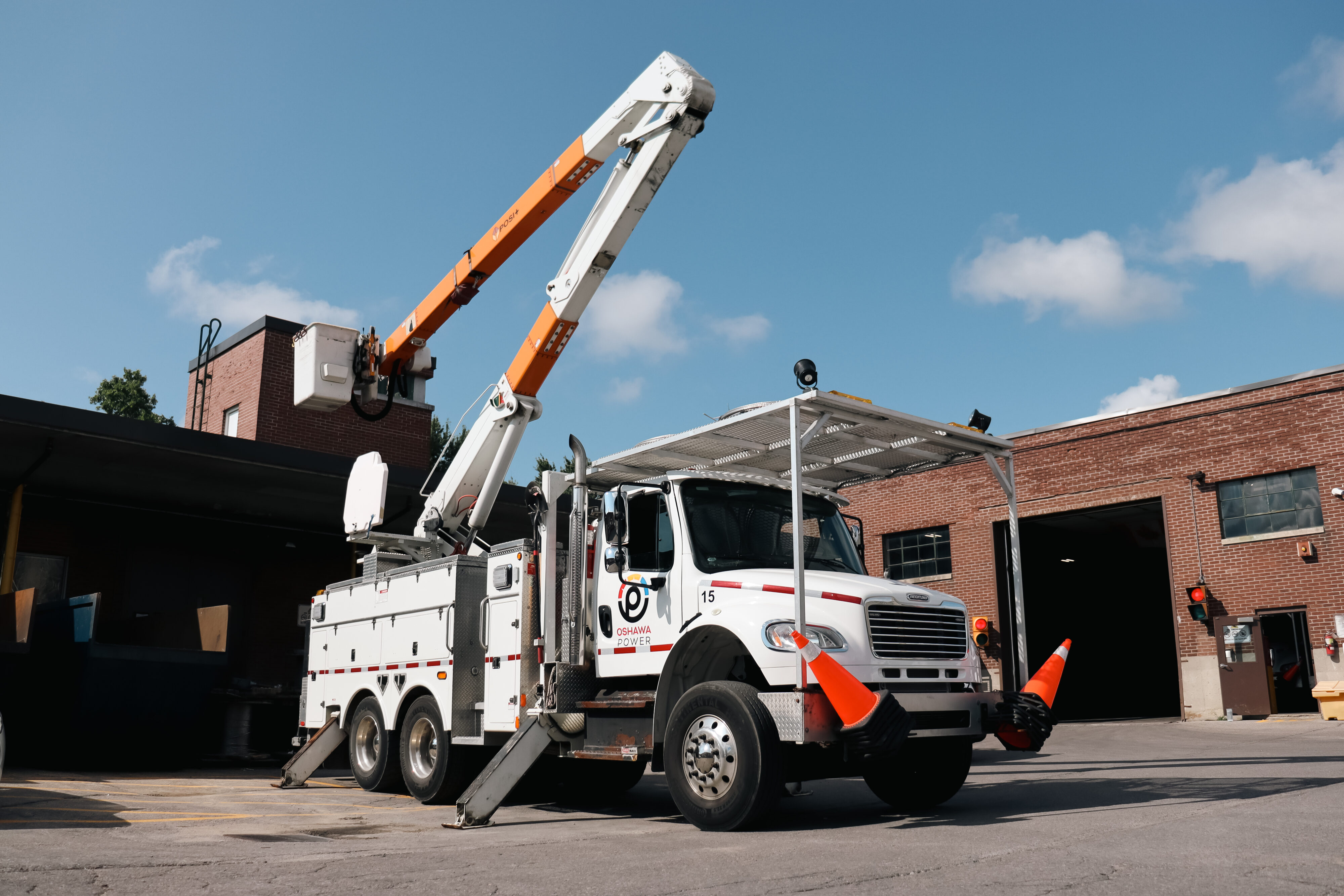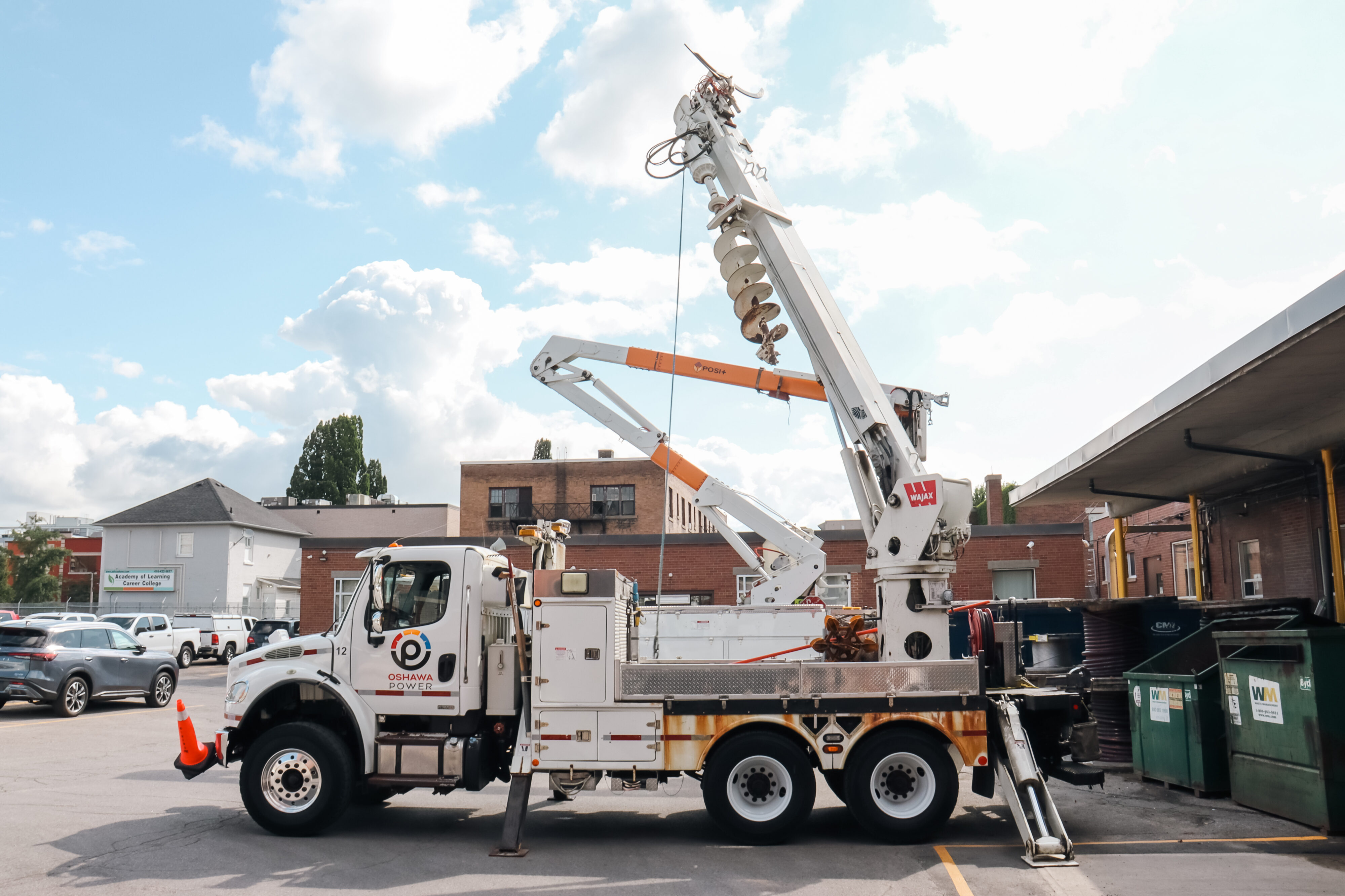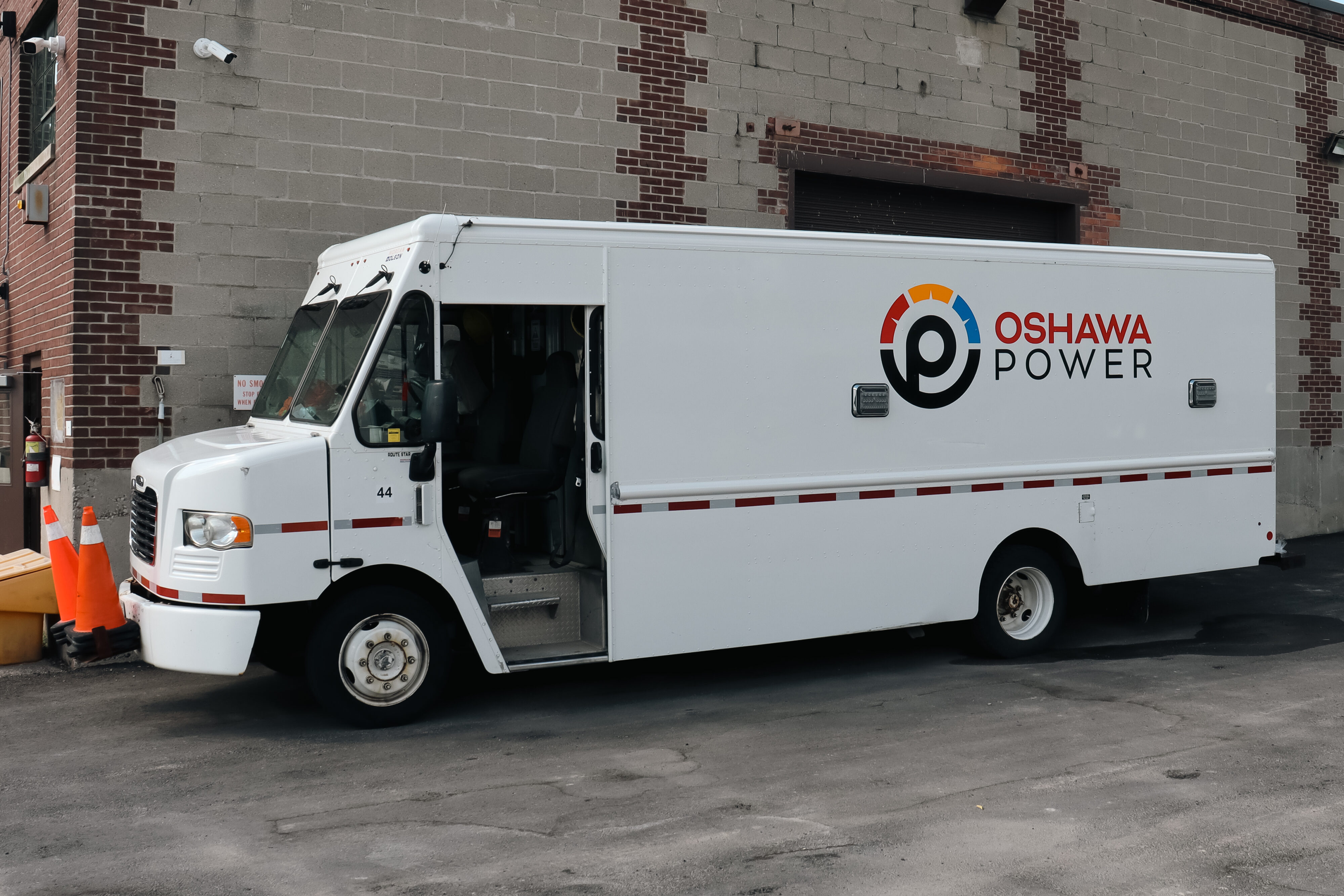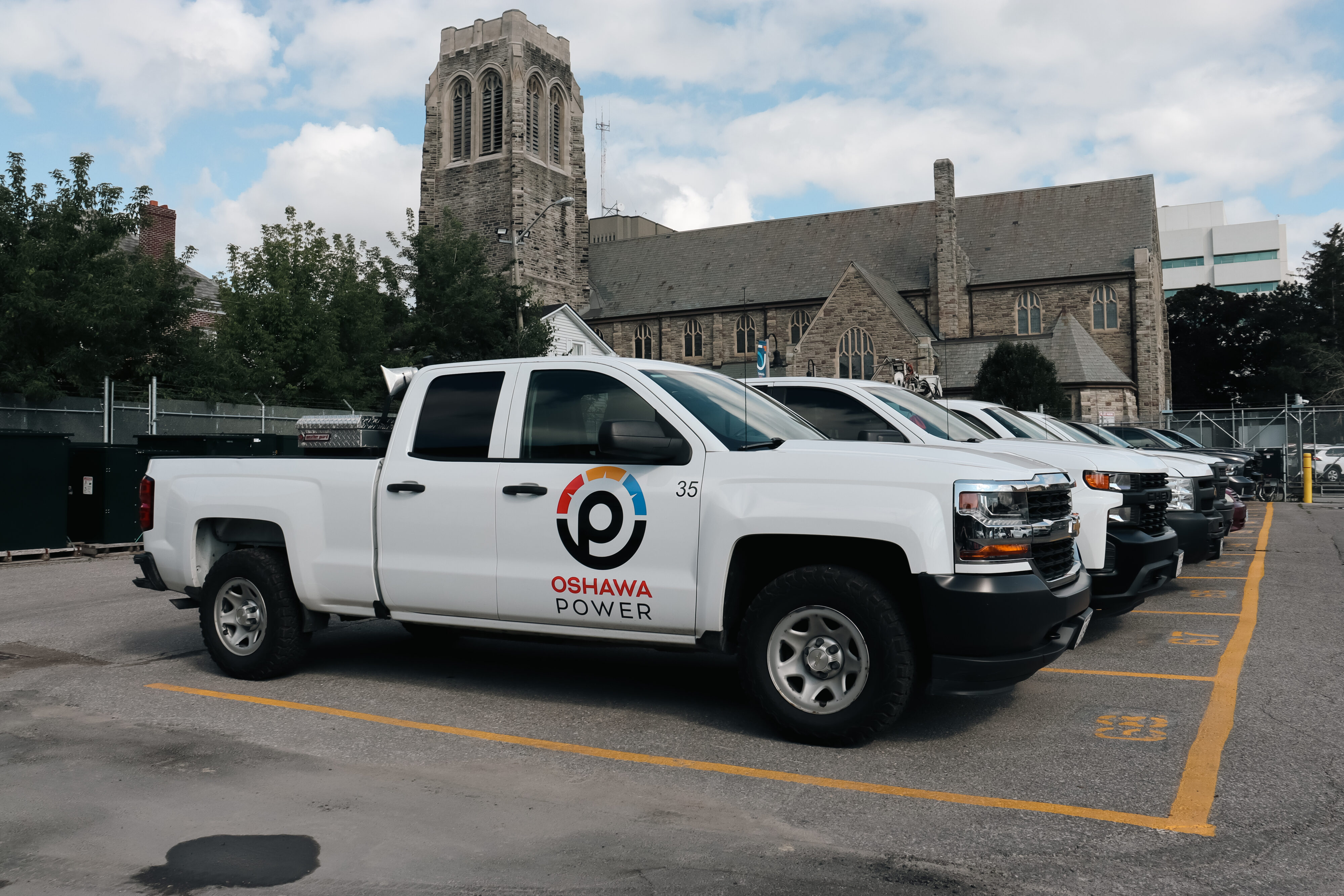Outages come in a variety of shapes and sizes, here’s what you need to know about what causes power outages.
As one of Ontario’s oldest operating electricity distributors, we know a thing or two about power outages. While the days of outages caused by insufficient water flow on Oshawa Creek are long in the past, outages remain an inevitable part of what we do, both for the better and for the worse.
Building a stronger, more reliable grid for our customers is at the core of everything that we do. Each year, millions of dollars are spent maintaining and upgrading our grid to ensure that when you flip the switch, your lights come on. In fact, in our recent history, we have posted reliability numbers eclipsing 99.99%, pushing the upper bounds of what’s possible.
Despite our strive for perfect reliability, a 100% reliability score remains near impossible. Due to the nature of electrical systems, the complex integrations of equipment, and their exposure to outside forces, outages are an inevitable occurrence. By sharing how we classify outages and the most common causes, we hope to help you better understand how our grid works and how our team is working towards building an industry-leading local power system.
Power Outage Types
In simplest terms, outages can be easily categorized into three specific types; reactionary, proactive, and momentary outages.
Reactionary Outages
Reactionary outages are likely the type of outage you think of when power outages are brought up in conversation. These outages, sometimes referred to as ‘unplanned’ outages, occur when an unexpected fault occurs on our grid, causing loss of power to our customers for an extended period of time.
Reactionary outages are clearly the most disruptive and impactful outages for our customers, as our team often must work to determine the issue, respond to the affected area, and complete necessary repairs before full restoration can be achieved. While this process can be lengthy depending on the extent of the issue, in 2022 our team averaged a response time of just 14 minutes. You can rest assured knowing that when outages happen, our team is ready to act.
While these outages are unpredictable in nature, we can, and do, act with foresight to ready our team when risk is elevated due to external factors like weather conditions.
Proactive Outages
A lesser known but equally important type of outage are proactive or ‘planned’ outages. These outages are important for numerous reasons – most notably allowing for our teams to safely complete maintenance and upgrades to our local power grid.
While these outages may still cause inconvenient disruptions to your day, we carefully plan these events to be as infrequent and non-disruptive as possible.
Our team ensures ample notice is given to homes and businesses in affected areas in case alternative arrangements must be made to limit impact on our customers.
Momentary Outages
The most misunderstood of all outage types, momentary outages or ‘blips’ as we often see them referred to by customers, can certainly be an inconvenience. Despite the inconvenience, these outages are actually a sign that our grid is working as intended.
We are proud to be one of the first local utilities to rollout a Fault Location Isolation and Service Restoration (FLISR) system that is integrated with our local power grid to almost instantly detect outages and restore service to as many customers as possible, as soon as possible. This isolates an outage to only the area directly affected by the issue, while customers that would have also experienced an extended outage in the past are restored within seconds.
Power Outage Causes
Power grids of all sizes can be affected by a number of unique issues that cause interruptions to the delivery of electricity. At Oshawa Power we use ten distinct power outage causes, as set out by the Ontario Energy Board (OEB), to classify service interruptions.
Adverse Weather
Typically the most common of power outage causes, Adverse Weather likely doesn’t need much explaining. Power distribution equipment is often exposed to the elements and heavy rain, snow, sleet, or wind can cause damage to our grid, interrupting service to our customers.
Snow often carries the most risk due to the weight of accumulation on power lines, transformers, and other equipment. Wind can also be particularly damaging as it can cause wires, and sometimes poles to break.
Defective Equipment
Another leading cause of power outages, Defective Equipment is a classification that encapsulates a variety of issues relating back to our physical infrastructure. Generally, there are three common causes of Defective Equipment outages; a factory defect on new equipment, random failure, or failure of equipment near end of useful life.
Our Capital Rebuild Plan is developed based on data-backed Asset Condition Assessments that help us prevent equipment from reaching end of life and avoid outages caused by aging, defective equipment.
Foreign Interference
The most misunderstood of power outage causes, Foreign Interference is far less menacing than it sounds.
Foreign Interference is the general term for physical interference with our lines, transformers, and other equipment from outside sources. Usually this interference is caused by local wildlife such as raccoons or squirrels, but can include motor vehicle accidents, aerial contact, or sometimes even a giant source of national pride.
 During the derecho of May 2022, a large Canadian flag became intertwined with powerlines causing further interruptions.
During the derecho of May 2022, a large Canadian flag became intertwined with powerlines causing further interruptions.
We have proactively implemented a Critter Guard installation program at all transformer stations and on all new transformer installations to mitigate the risk of these outages.
Tree Contact
Another potential source of interference with our grid is local vegetation. Due to the usual proximity of our infrastructure to vegetation, limbs may come into contact with our wires or other equipment causing outages.
We have developed an ongoing Tree Trimming and vegetation mapping program to pinpoint potential areas of concern and prune these problem areas to help avoid these outages.
Lightning
Outages caused by Lightning generally go hand-in-hand with Adverse Weather. Electrical systems can be drastically affected when infrastructure is struck by Lightning.
Scheduled Outage
Necessary for maintaining and improving our local power grid, Scheduled Outages must occur when our crews are completing work on our grid for their safety and the safety of our local community.
To minimize the impact of Scheduled Outages on your daily life, we will always communicate upcoming planned outages via the delivery of a Planned Outage Notice to all service addresses that will be impacted.
Loss of Supply
In Ontario, each Local Distribution Company (LDC) is connected to the larger provincial grid where electricity generated at hydroelectric, nuclear, and other generation facilities is distributed across high-voltage lines to transformer stations where it is ‘stepped down’ and delivered to the end user. When an issue occurs along these high-voltage lines or at a transformer station preventing electricity from reaching an LDC’s grid, the result is a Loss of Supply outage. These are quite rare but can be among the most impactful power outage causes.
Adverse Environment
Outages caused by Adverse Environment are another rarity. These outages occur when our distribution equipment is subjected to abnormal factors such as salt spray, industrial contamination, corrosion, or fire, among other potential issues.
Human Element
An exceedingly rare cause of power outages in Oshawa and across the province, there is still some human element involved in certain steps of the electricity distribution process. When human action causes an issue with the delivery of electricity, it is classified as a Human Element outage. We experienced no outages caused by Human Element in 2022.
Other/Unclassified
The last outage type is the most vague. In rare cases when a direct cause cannot be reliably determined, the outage will remain Unclassified.
We hope that this information has helped you to better understand the types and causes of power outages, some of the challenges our team faces in delivering safe and reliable electricity to your home or business, and the strategies we have in place to minimize downtime and mitigate outage risk.
We encourage you to continue to report outages when they happen via our online Outage Centre and let us know about your experience. Even with our industry-leading FLISR system detecting outages instantly, your reports can help us pinpoint exact locations where issues or interference may be present, leading to a quicker response and shorter service interruption.
While no power outages would be an ideal outcome for our customers, unfortunately that goal remains unattainable. Despite the near impossibility of 100% reliability, our team continues to strive towards the best possible reliability we can provide, aiming to reach ‘four nines’ or greater than 99.99% reliability each and every year.










